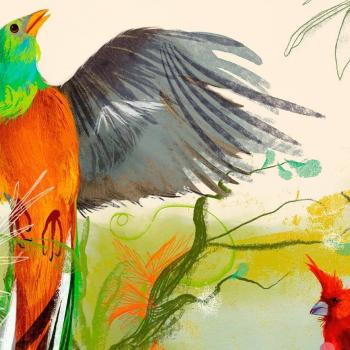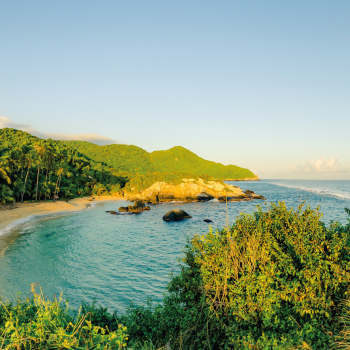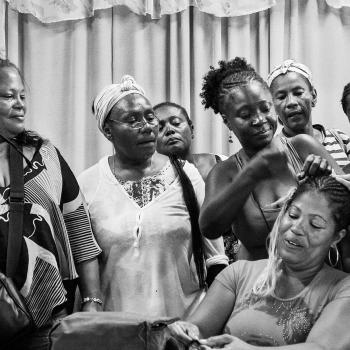Medellin: Innovative and Diverse
Its flowers, year-round spring birdsong, festive atmosphere and streets brimming with life, are making Medellin the quintessential LGBT destination in Colombia. The second largest city in the South American country was the first to get out of the closet.
Medellin is a place to flourish. It’s not in vain that it holds the title of the City of Eternal Spring. Its best moment comes at sunset, when the heat of the tropics yields to the fury of its effervescent nightlife, the aroma of its mountains, the taste of liquor and the warm talk of its inhabitants—recognized in Colombia as the best conversationalists. Cumbia, tango, salsa, electronic music and guaracha begin to fill the streets, inviting even the most shy to surrender to the dance floor.
With nothing to hide, the gay tourist will find it interesting to know that in Medellin there’s a street full of stories and rhythms dedicated exclusively to LGBT people. Barbacoas Street, located in the center of the city, one block away from the emblematic Parque Bolivar, behind the Metropolitan Cathedral, has been the backbone of the gay scene since the 1980s.
Under the asphalt, when the party goes out in Barbacoas, you can hear the shivering of stones coming from the La Loca ravine that is lost under the Cathedral, the one that divided the street into three parts: one for the usual lesbian and gay bars, another occupied by trans women and the last one for the stores of religious props and disposable products. The echo of La Loca increases every year, during the last weekend of June, when the LGBT Pride March (the second largest in the country) floods the few hundred feet of the alley.
Although the celebration has been held regularly since 1998, in truth, Medellin is the city that gave the first call for the LGBT liberation in Colombia. In the mid-1970s, the Homosexual Liberation Movement founded by philosopher León Benhur Zuleta was responsible for the first Colombian gay magazine, El Otro, of which some copies are kept in the Library of the University of Antioquia; where you may also find other masterpieces of local homosexual literature like Te quiero mucho, poquito, nada, (He loves me, He loves me not) the novel by artist and writer Felix Ángel set in Medellin in the 1970s; and the academic essay “Raros: historia cultural de la homosexualidad en Medellin” (Queers: cultural history of homosexuality in Medellin) in which Professor Guillermo Correa contextualizes one hundred years of homosexual experience in the city. The Homosexual Liberation Movement prided itself in having 10,000 active members, although the figure was Zuleta’s pious lie to encourage others to get out of the closet and collectivize their desires. And it was achieved.
Since then, different generations of social organizations and legislative advances such as equal marriage and adoption by same-sex couples have contributed to making Medellin a friendly city with LGBT locals and visitors. To the point that in 2014 it was included in the Latin American Rainbow Cities Network and in 2019 the Conexia Medellin forum was held, bringing together the local government, the hotel guild and the entities responsible for strengthening tourism with the common objective of making the city a gay friendly destination.
Did you know that in Colombia, same-sex marriage was ratified in 2016?
Medellin is a city that is best experienced outdoors. Among the public spaces that offer a warm welcome to the LGBT population is the Carlos E. Restrepo Square west of the city, which with its bohemian atmosphere and its offer of artistic galleries and restaurants, helps break the ice of any conversation. To the south of Medellin, near the renowned El Poblado neighborhood, Ciudad del Rio park offers 1,600 linear feet for outdoor recreation, a meeting place to make friends and the usual Sunday picnics. In the center of the city, Parque del Periodista brings together the most varied cultural diversity of Medellin every night: from punks, metalheads and theater crews to LGBT people celebrating the gathering of diverse people. El Periodista has become an articulation point for the cultural life of the city. Under the shadow of its old rubber tree, there has been an emergence of social organizations and newspapers such as Universo Centro, which recounts the constant change, the fleeting characters and the diversity present in downtown Medellin.
Only one block away from El Periodista is the Colombian-American Center, which for 18 years has held Ciclo Rosa (The Pink Cycle) during the month of June with audiovisual programming, academic forums, workshops and exhibitions exclusively dedicated to sexual diversity. This cultural agenda has also been nurtured by the Museum of Modern Art, with exhibitions and academic programs such as Formas de Libertad by artist Carlos Motta, which compiled the milestones of the LGBT movement at the local and global level; and spaces such as La Esquina del Movimiento, in the Antioquia Museum, a showcase that has taken the art from the walls of the old building to the streets. There, between Cundinamarca and Cali streets, it’s common to see performances that encourage conversations about diverse sexualities and public space. Different groups of drag art, dancers, activists and performance artists have found in that corner the possibility of expressing their artistic work.
As initiatives of the LGBT sectors, other spaces of artistic activation have appeared as a hybrid between the festive and the aesthetic, such as The Gallery At Divas (in the lower part of Barbacoas street) and La Casa Centro Cultural (one block south of Parque Bolivar on Maracaibo street), whose façades don’t differ from the variety of bars that surround them; inside they hide spaces dedicated to art, body and sexuality, with regular exhibitions of photography, painting, performances and video art.
But the Medellin gay scene is also experienced happily outside its city center. Spaces such as Parque Lleras, located in the exclusive neighborhood of El Poblado south of the city, or the bars of 33rd Avenue are increasingly welcoming for LGBT locals and tourists, encouraged by the drag circuit that has fueled the political nature of the party culture by groups like Cultura Drag Medellin, New Queers On The Block and Drag King Medellin. Drag fever has taken over Medellin to the point that in 2019 at the Camilo Torres Theater of the University of Antioquia the first local Under Drag Queer contest was held.
Out of the party and cultural agendas, Medellin also radiates diversity in its high-altitude neighborhoods. From El Periodista park it’s easy to take a bus to Cerro Pan de Azúcar, one of the eight tutelary hills of Medellin.
Besides the prominent view of the city, it’s easy to contact Mesa LGBT of Comuna 8 and get to know its Casa Diversa project. This organization, declared in 2017 as the first subject of collective reparation of the LGBT sectors within the framework of the armed conflict, has expanded the possibilities of inhabiting and enjoying the city with its community work and appropriation of public space. In the tours offered by Mesa LGBT through the neighborhoods of Comuna 8, in addition to random memories and anecdotes of forbidden loves, it is possible to hike through the natural landscapes that range from mountains to a secret waterfall on the outskirts of Medellin.
In July, during the Flower Fair, the most recognized festival of the city, it’s more common to find same-sex couples searching for handicrafts about the Junin passage and enjoying the different music shows, the parade of silleteros and the events taking place during that week. In 2019, the program even included a Tour Queer Flores y Silletas as a strategy to give recognition to the city’s sexual diversity and enhance the participation of LGBT citizens in the great Medellin party.
If you want to say goodbye to a holiday with some humidity and outdoor activities, or with a marriage proposal in unforgettable places, the safest option is found in the municipalities of eastern Antioquia. There, the LGBT population has been coordinating itself to reactivate tourism in the rivers of San Carlos, the El Peñol rock and the Guatape dam; this latter municipality celebrated its first LGBT Pride March in December 2019 as a nod to a more diverse and colorful tourism, in tune with its façades and traditional baseboards—which are an urban and an architectural heritage of the municipality.
Medellin, a city once marred by drugs trafficking violence and discrimination, resurfaces to welcome openness and empathy. More and more spaces are conquered by single gay men looking to meet each other, lesbian couples celebrating their honeymoon and the increasingly less shy transgender and queer identities that walk through their passages and boulevards.
Text by Julio Londoño



























